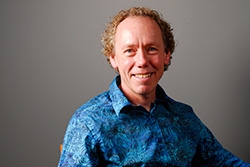Telehomecare is focused on supporting patients with long-term chronic diseases. As our population ages, more and more people are living with chronic diseases, which means they’ll be seeing physicians more and going to the hospital more. This results in higher costs for the healthcare system. So the healthcare system is looking for ways of supporting these people to live optimally with their chronic disease, and to minimize the need for them to engage with the healthcare system. The Telehomecare program is a way of helping people understand their illness better, and to self-manage their chronic disease without the need for interacting with the healthcare system.
A Telehomecare patient, doctor, and nurse talk about Telehomecare, an important new Ontario program for people with COPD or Heart Failure.
Component One: Monitoring
Patient monitoring looks at physiological parameters like blood pressure, weight, and blood oxygen level. It also combines a variety of structured questions that the patient answers each day, e.g. whether they’re more/less short of breath, whether they’re ankles are more/less swollen, whether they’re more/less fatigued, etc. All of this information is sent to a central data repository and trended over time. The information is then shared with the patient’s primary care provider. There are usually acceptable ranges for all of the parameters, and if the patient falls outside of the range, the computer puts a red flag on their name and the healthcare provider is notified so they can call the patient and find out why things have changed. The healthcare provider is then able to increase their medication and/or modify the patient’s daily management, all with the aim of improving the situation so the patient’s condition doesn’t deteriorate to the point that they have to call an ambulance and go to emergency.
Component Two: Coaching
We then use all that information to help structure a learning experience with the patient over the course of a few months. The aim of this component is for the patient and their caregivers/families to learn more about their chronic disease, what all the physiological parameters and measurements mean, how to interpret them when they’re changing, and what kind of corrective actions they can take if they start to change. This allows the patient to make their own changes to things they do every day – to the way they eat, the way they exercise, and potentially the way they take their medications. This is often combined with goal setting, so the patient with their coach, can determine what sort of goals they hope to achieve in managing their chronic disease. For example, someone with chronic obstructive pulmonary disease (COPD) may need home oxygen and as a result be unable to leave the home very easily because they’ve got to take a lot of equipment with them. So maybe their goal is to become comfortable enough with their equipment that they’re able to visit their son or daughter every Sunday for dinner, with their oxygen. In this case it would be coaching them on how to get comfortable with their equipment, how to move their equipment, and what to do before they leave and when they come back home from a trip. These kinds of goals are incorporated into the coaching to make it meaningful for the patient in managing their own illness.
The future
We’ve started with three LHINs in managing people with congestive heart failure and COPD. In the future we will expand to other chronic diseases, things like diabetes, rheumatoid arthritis, and hypertension. We will also expand this program to all fourteen LHINs in the province.






